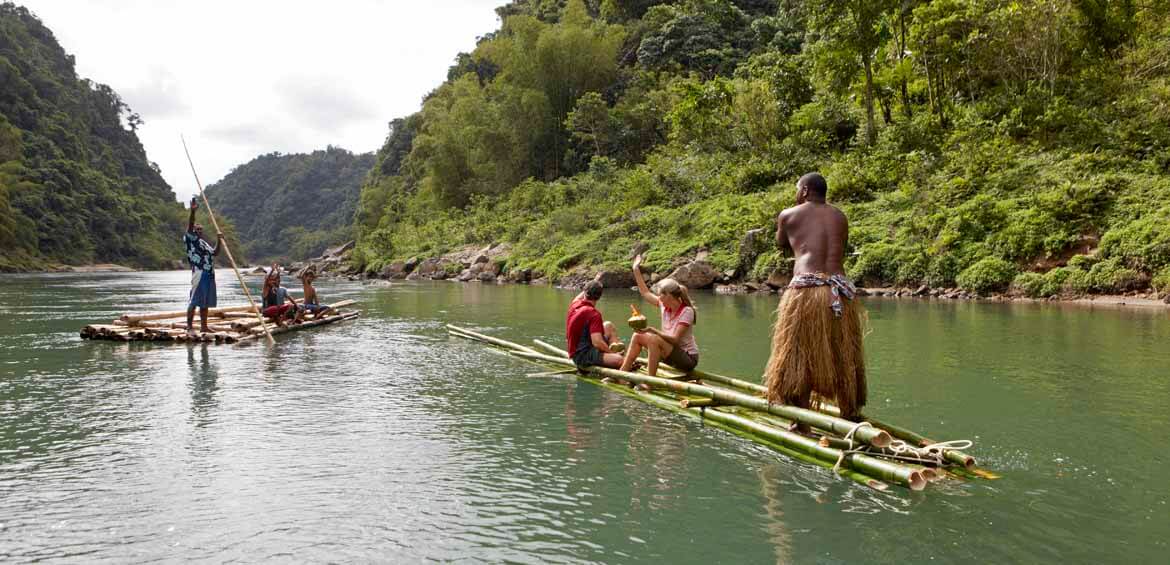

Fiji’s postcard-perfect beauty continues to draw record visitor numbers but the profile of who’s coming is changing fast.
Photo/McLennan/Plantation Island Resort, Fiji/File
Fiji tourism boom hides growing generation gap, industry experts say
While visitor numbers hit record highs, younger families are turning to Asia, leaving the Pacific paradise dependent on older travellers.



Could a Tongan short film gain an Academy Award nomination?




Could a Tongan short film gain an Academy Award nomination?

Fiji has long been a favourite for multigenerational holidays - white sandy beaches, warm hospitality, and family-friendly resorts have kept travellers returning year after year.
But that picture is starting to shift. Rising prices, shorter stays, and tougher competition are making the Pacific paradise less appealing to holiday-seekers, especially the younger, budget-conscious tourists.
While recent arrival numbers remain strong, including record-breaking months this year, tourism experts warn the broader trend reveals early warning signs.
Visitors are spending less and staying for fewer nights. Reports from the regional bank, ANZ, show younger families are increasingly choosing Southeast Asian destinations such as Vietnam, Thailand, and Indonesia over Fiji, where the same budget stretches further.
According to the Fiji Bureau of Statistics, Australia remains Fiji’s largest visitor market, consistently accounting for the biggest share of arrivals. In 2024, around 455,228 Australians visited the islands, representing nearly half of all international arrivals.
New Zealand is the second-largest source, with 225,928 visitors in 2024, or 23 per cent of the total.

Local tourism operators say spending patterns are shifting, with older visitors staying longer but spending less outside resorts. Photo/ Department of Information, Fiji/File
The trend has continued into 2025. In July alone, Fiji welcomed 44,972 visitors from Australia and 25,311 from New Zealand, contributing significantly to the country’s record-breaking monthly totals.
While these traditional markets remain strong, tourism analysts note that younger families from both countries are increasingly seeking alternative destinations in Southeast Asia, drawn by lower costs and value-for-money experiences.
Economists say Fiji’s traditional visitors aged under 50 are being replaced by older holidaymakers, most of them in the 65 and over bracket.

Younger families and travellers are increasingly choosing cheaper destinations in Southeast Asia over Fiji, where costs have climbed sharply. Photo/Tourism Fiji
The early months of 2025 exposed some of that fragility. In February, Fiji welcomed just 49,483 visitors - a sharp 30.1 per cent drop from January.
Tourism analysts say the slump highlighted the destination’s dependence on older markets and its vulnerability to economic fluctuations.
“Fiji’s visitor profile is ageing, and that matters because older travellers tend to spend differently,” Merewai Naivalu, an economist at ANZ Pacific, says in a report.
“They often stay in higher-end resorts but spend less on local experiences, restaurants, and excursions - the areas that create the most jobs on the ground.”
Local operators have also noticed the shift first-hand. “We used to get lots of young families from Australia and New Zealand,” Raj Prasad, a resort owner in Nadi, says.
“Now, it’s mostly retirees. They stay longer but are more cautious with spending. Family packages are harder to sell these days,” he says.
For many would-be visitors, price is the deal-breaker. “We love Fiji. It’s beautiful and the people are amazing, but it’s just gotten too expensive for a week’s holiday,” Australian Emma Li, 34, reports.
Li recently took her family to Vietnam instead. “In Da Nang, we got a resort, daily activities, and meals for half the price. For families like ours, that makes all the difference.”
Fiji's Tourism Minister Viliame Gavoka remains upbeat, saying a slight cooling in growth doesn’t necessarily spell trouble.
“Even a minor dip in growth, estimated at one or two percentage points, still signifies solid advancement within the industry,” he says in a statement.

Fiji is seeing more visitors aged 65 and over, a trend that’s reshaping how resorts and tour operators cater to their guests. Photo/The Fiji Times/File
That optimism is backed by record numbers later in the year.
In July 2025, Fiji welcomed 99,311 visitors, its highest monthly arrivals ever, driven by strong growth from the United States, Canada, and Europe.
From January to July 2025, total arrivals reached 543,073, keeping Fiji on track for another strong year after a record-breaking 2024, when the country passed one million visitors for the first time.
Brent Hill, the former chief executive of Tourism Fiji, says the destination’s appeal remains unique.
“July has been our biggest month ever, and while that’s incredibly exciting, the magic of Fiji is that it never feels crowded,” TravelDailyNews reports.
“With resorts and activities spread across 333 islands, visitors can still enjoy their own private escape - from secluded beaches to hiking trails and waterfalls with no one else around.
"Importantly, Fiji continues to deliver excellent value, especially for travellers with stronger currencies like the US dollar and euro.”
The challenge ahead
Still, analysts warn that headline numbers can mask deeper shifts. “It’s not just how many people come, it’s who comes, how long they stay, and what they spend,” Naivalu says.
The Fiji Times recently reported a notable increase in the number of visitors aged 65 years and over and a decline in Fiji's traditional visitor segment, young families.
The ANZ Pacific Insight Report states that, "At present, the number of visitors in the 65+ age group has reached 113,302 arrivals - the highest of all age groups visiting Fiji, up from fourth position."

Analysts say new eco- and adventure tourism offerings could help Fiji reconnect with younger, experience-driven travellers. Photo/Holidays With Kids/Chris McLennan
Given that tourism accounts for a large share of Fiji’s GDP, these demographic changes carry weight.
The sector’s long-term growth may depend on whether it can re-engage younger travellers and families without losing the high-value older segment it currently attracts.
Industry experts suggest several paths forward, which include diversifying accommodation options, promoting budget-friendly local stays, and investing in eco- and adventure tourism that appeals to younger markets.
“Fiji still holds its magic,” Prasad says. “But if we want the next generation to keep coming back, we’ll need to make it affordable, and keep it authentic.”

Photo/Tourism Fiji